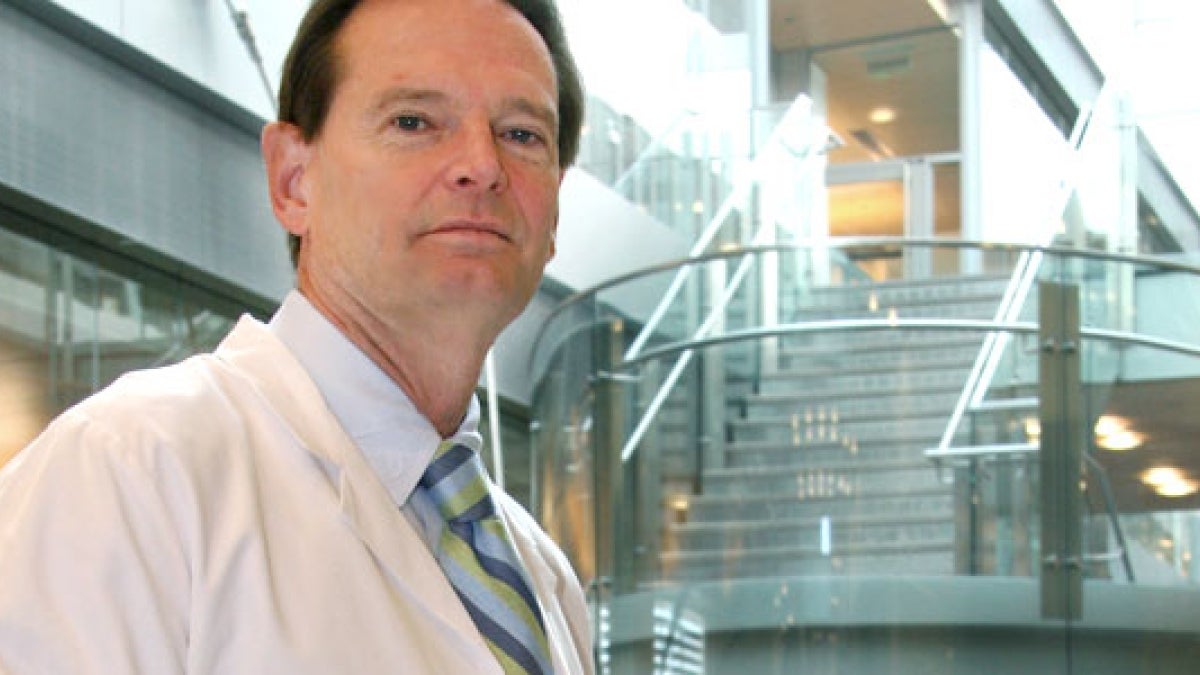ASU professor on Theranos technology

Stephen Albert Johnston, co-director of ASU's Center of Innovations in Medicine
Theranos, a startup offering low-cost tests that require just a few drops of blood and screen for everything from cholesterol to cancer, has drawn national attention and is now valued at $9 billion. Recent news media reports, however, have scrutinized the company’s technology and the accuracy of its tests.
Stephen Albert Johnston, co-director of the Center of Innovations in Medicine at Arizona State University’s Biodesign Institute says the company has made breakthroughs but also has some proving to do.
Question: Why has Theranos technology rattled the health care market so much?
Answer: Basically, they have three things they pitch that are interesting and unprecedented. Theranos offers a convenient blood analysis in which only a little blood is taken. Secondly, the blood tests are offered at a low cost allowing people the ability to pay out of pocket. The third has to do with Theranos’ mantra — that their convenient direct to consumer model and low cost tests can lead to people getting tested sooner which can lead to earlier disease detection. It’s a groundbreaking business model with an underlying vision that is encouraging and exciting. However, the biggest reservation is they don’t have any new biomarkers for early detection of diseases. What they have done is to make the detection with existing markers easier to use.
Q: Media reports question whether the technology is new or just repackaging of existing processes. Which is it?
A: Basically what they are doing is changing and challenging the traditional business model of existing diagnostics labs and the way the tests are done. What they are saying is, “I’m not going to collect lots of blood from you, but I am going to test for the same things that other places test for and also do it for less.” Their main challenge now is to make sure their Edison testing machines are capable of making lots of measurements on less blood. They’ve had some trouble meeting this, but are likely to overcome it. Right now, many of their tests are being conducted on traditional blood testing equipment that other companies are also using.
Q: The other major criticism is that the company’s board is packed with political figures instead of scientists. Does this matter?
A: I’ve been following the company since its initiation. While I was surprised to see a board like Theranos has, I don’t know whether it has actually been a detriment in getting the technology up and running fast enough. However, it has certainly helped them in raising their funds and that has been quite remarkable. There has been some skepticism simmering about Theranos for a while as they’ve not yet published on their system in medical journals. However, they still have to work though FDA validation and are subject to the same regulations as any other diagnostic testing labs. I think they will find a way out of their current challenges – even though as of now, they have stopped doing needleless draws.
Q: Is this a case of jealous competitors in health care who don’t want to see prices brought down?
A: Yes, it appears to be part of what can be the “pile on the leader” phenomena. There is some vulnerability here for Theranos though, in that they’ve made some big promises. The company is now valued at the same level as Quest and LabCorp and to be a major player like this so fast is really quite remarkable. Still, they are going to have to scramble to put some basic components back together based on their initial business model promises. Right now, for the vast majority of their tests, they are using the same type of machinery as Quest and LabCorp and using their Edison machines for only one test. They will eventually need to get their system back on Edison for most of their tests.
Q: Is this something Theranos is likely to recover from?
A: Though we can’t tell for sure and I don’t know what their burn rate is on the 400 million dollars they’ve raised, but they already know they can collect a small volume without needles. If they can do accurate determinations on their Edison machines on most of their assay tests, and get FDA clearance for those tests, then I would say yes. If they can’t, then they might have a problem.
More Science and technology

Will this antibiotic work? ASU scientists develop rapid bacterial tests
Bacteria multiply at an astonishing rate, sometimes doubling in number in under four minutes. Imagine a doctor faced with a…

ASU researcher part of team discovering ways to fight drug-resistant bacteria
A new study published in the Science Advances journal featuring Arizona State University researchers has found…

ASU student researchers get early, hands-on experience in engineering research
Using computer science to aid endangered species reintroduction, enhance software engineering education and improve semiconductor…